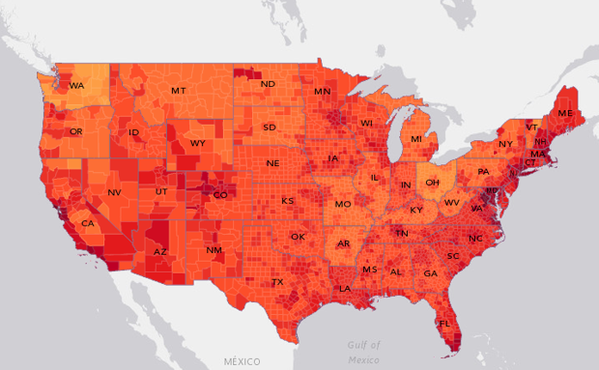The minimum wage peaked in 1968 at $8.54 per hour, after adjusting for inflation. The current $7.25 is far too low for the3 million hourly workers who earn at or below that threshold, and certainly not at par with the wage hikes instituted by other countries with similar economic trajectories.
Here’s The Economist on America’s embarrassingly low minimum wage:
Given the pattern across the rest of the OECD, a group of mostly rich countries, one would expect America, where GDP per person is $53,000, to pay a minimum wage around $12 an hour. That would mean a raise of about 65% for Americans earning the minimum pay rate.
But while several states have higher local minimums (and some cities plan to raise them further), the U.S. as a whole is not where it needs to be. To visualize the problem, MIT has released a new tool called the Living Wage Calculator, which maps the difference between minimum wage and basic costs of living in cities and counties across America. The map shows that for most minimum wage earners, supporting their families is an enormous struggle.
[For more of this story, written by Tanvi Misra, go to http://www.citylab.com/work/20...st-of-living/404644/]




Comments (0)